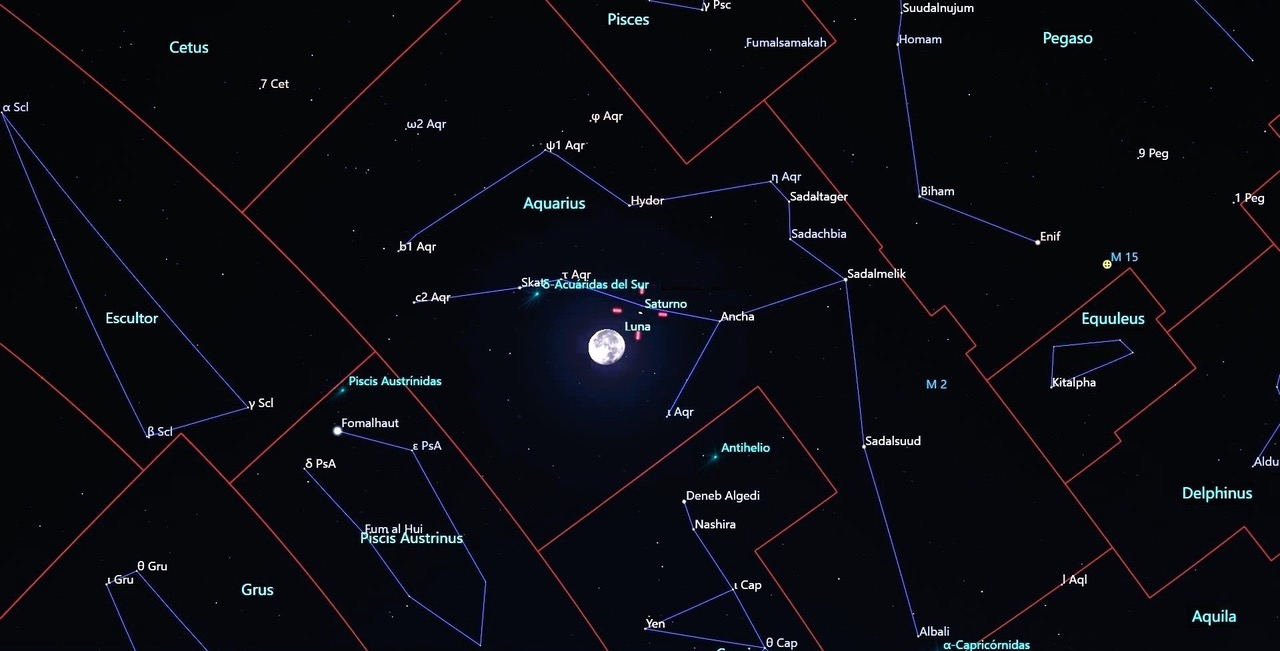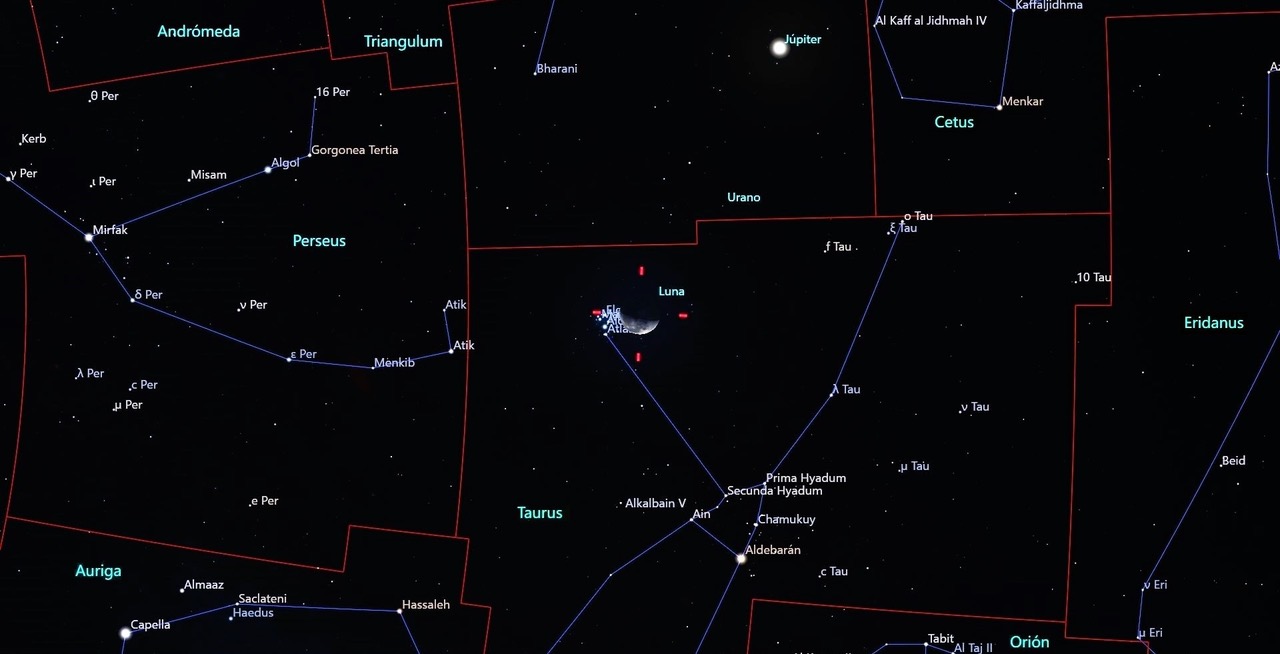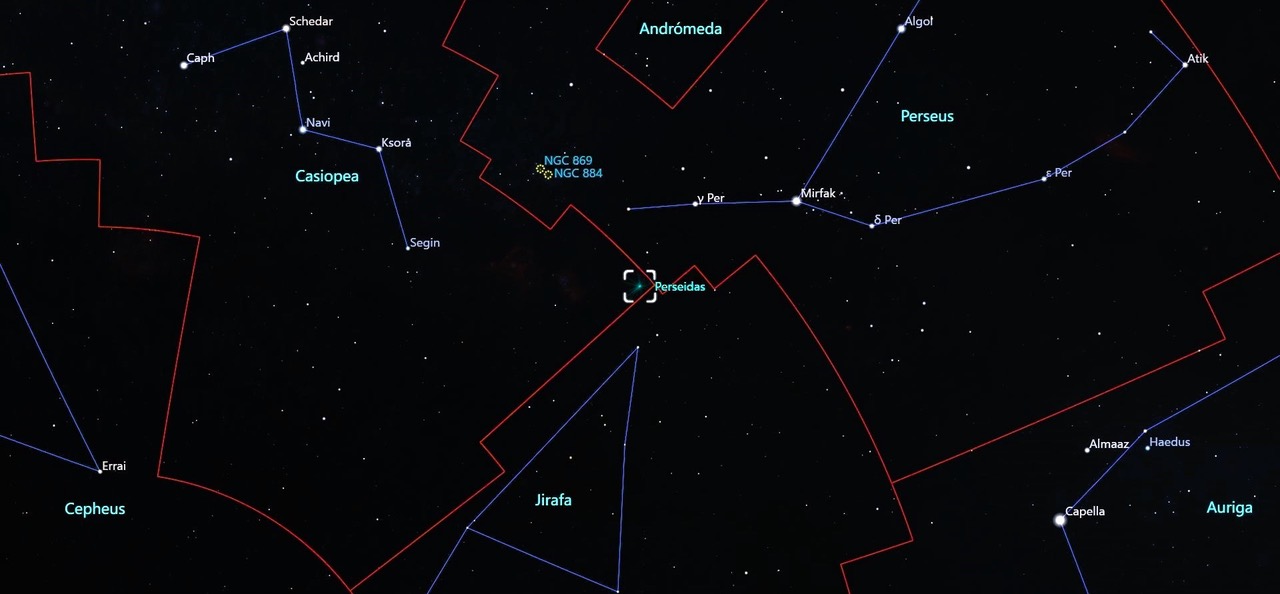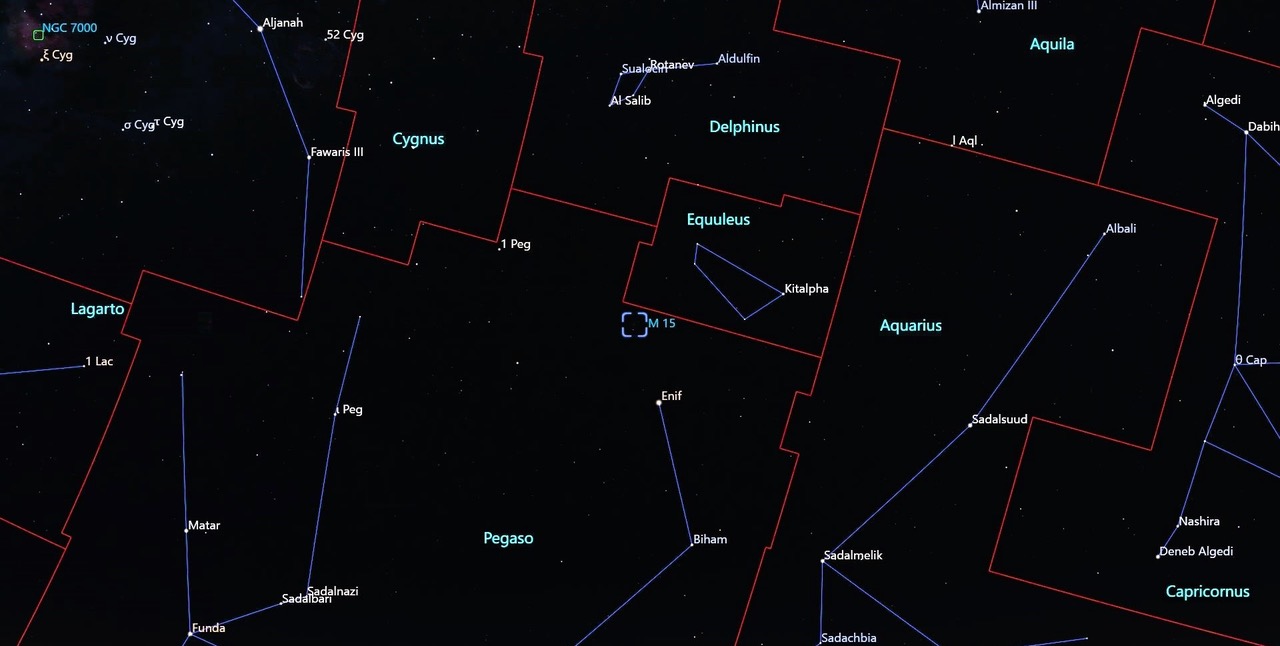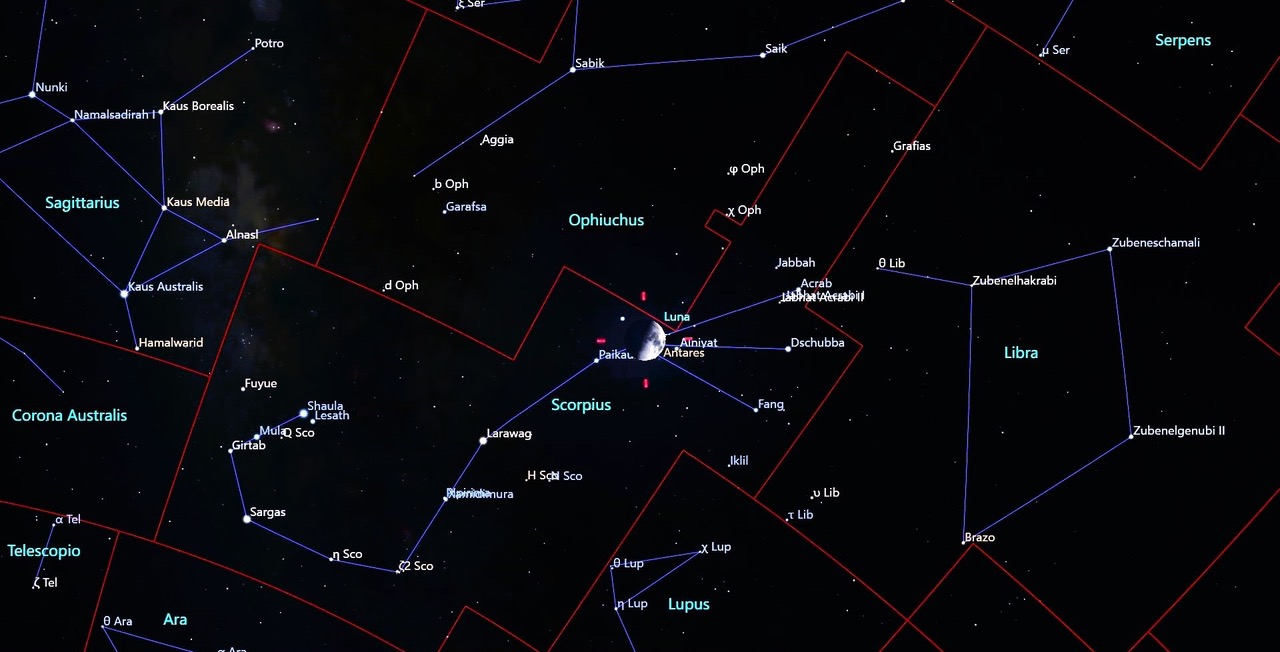Astronomical events of the month of August 2023
This month we will introduce you to one of the greatest astronomers in all of history, William Herschel. Likewise, the traveling Moon will visit Saturn and the open cluster of the Pleiades. During the month of August, you cannot miss the famous Tears of San Lorenzo. Every month of the year is suitable for marveling at a Messier object and this time, as the challenge of the month, it is the turn of M15. The Moon continually hides celestial objects as it passes through the firmament, thus, we will have the opportunity to see an approximation of the Moon to the star Antares. August is a summer month and that there is a strong probability of cloudy skies, but we can always find a space to enjoy some celestial phenomenon. The phases of the Moon will be present, like every month.
Music and science hand in hand with Sir William Herschel
Of German origin, Friedrich Wilhelm Herschel (1738-1822), did not significantly transcend himself as a composer and musician, but as an astronomer, he accomplished great feats.
William Herschel, as he was known in England, ventured into the celestial realm with annotations of the rings of Saturn and the Orion Nebula, in 1774. His first great discovery was the planet Uranus with the help of astronomer Anders Lexell, making him worthy of the Copley Medal (1781) and appointment as Astronomer Royal (1782).
In 1787 he discovered the satellites that orbit around Uranus, called Titania and Oberon. He married Mary Baldwin Pitt and from the marriage was born John Herschel who, along with his father and his aunt Caroline Herschel, made a great team.
Like all good astronomers, he always sought to use a better telescope, so he designed and built a Newtonian-type reflector with a diameter of 15.5 cm and a focal length of almost 2 m, a refractor with a diameter of 60 cm and, in 1789, he finished the construction of its largest and most powerful telescope with an aperture of 1.2 m and a tube length of just over 12 m. With these instruments he managed to resolve star clusters, he discovered the galaxies NGC 2903, NGC 7184 and NGC 2683, the Eskimo Nebula and Saturn's satellites: Mimas and Enceladus. Herschel also discovered infrared radiation in the 1800s.
Due to his great scientific career, he was named Sir William Herschel in 1816, and five years later, he became president of the Royal Astronomical Society. His name was immortalized in craters, an asteroid, a telescope and an observatory.
The traveling Moon visits Saturn
Throughout the month, Saturn will be a protagonist, along with the Moon. On the 3rd at 4:25 p.m., central Mexico time, there will be a conjunction of the Moon with Saturn, in such a way that the Moon will pass only 2° 28' south of Saturn, in the direction of the constellation Aquarius , to the southeast of the celestial sphere. Saturn itself will “steal the camera” again on August 27 at 2:20 p.m., central Mexico time, when it is in opposition, that is, when the planet and the Sun are on opposite sides of the sky. At about the same time it will be in perigee, at a distance of 8.76 AU. to the Sun. All this, in the direction of the constellation of Aquarius.
A very unique meeting
Our natural and traveling satellite makes a very close view of the famous open cluster M45 (the Pleiades). The Moon will pass just 1° 20' from this open cluster. Greek mythology tells that the Pleiades were seven sisters (Alcyone, Electra, Maia, Merope, Taigeta, Celaeno and Asterope), daughters of the Titan Atlas and the sea nymph Pleione, and they are visible to the naked eye. The approach can be observed in the direction of the constellation of Taurus. The approach will be observable during the early morning of the 9th, although the closest proximity will be reached near sunrise.
The Tears of Saint Lawrence
The Perseid meteor shower, also known as the Tears of Saint Lawrence, in honor of the character who was burned at the stake on August 10. In the Middle Ages and the Renaissance, the meteor shower was associated with the tears shed by this saint during his torture.
The Perseids will be active between July 17 and August 24, with a maximum on August 12. The maximum observable rate will be 150 meteors per hour, in the direction of the constellation Perseus. The rain will have its maximum around 9:00 p.m., central Mexico time, on August 12, so the best time to enjoy this event will be at dusk on the 12th and in the early morning of August 13, towards the northeast of the celestial sphere and preferably in dimly lit places. The waning Moon will not significantly interfere with the observation of this phenomenon.
Golden star chipboard
The globular cluster M15, NGC 7078 or Pegasus Cluster, is one of the oldest clusters in the Galaxy, as attested by its hundreds of red giant stars and low metallicity stars; This cluster is believed to be 13.2 billion years old.
M15 was first seen by Jean-Dominique Maraldi in 1746, who described it as "a nebulous star, quite bright and composed of many stars." Some years later, in 1764, Messier cataloged it and Johann Elert Bode described it as a "starless nebula" and William Herschel in 1783 resolved this beautiful star cluster. In 1928 the first planetary nebula within a globular cluster could be identified. The cluster is located at a distance of about 33,600 light-years from Earth, has a diameter of approximately 18 arc minutes or 175 light-years, and its visual brightness is magnitude 6.2, so with binoculars or small telescopes It will be visualized as a round nebula.
When the stars hide
Some celestial objects are temporarily "hidden" by others, as in the case of eclipses, in which two objects of similar angular size coincide in the sky and one of them is hidden by the other. There are other occultations, such as lunar ones. There is talk of a lunar occultation when the Moon, with its 32 arc minutes in diameter, hides or covers another much smaller object.
This month we will have the lunar occultation of Antares (Alpha of the Scorpion). When there is a close approach between them, a lunar occultation is created, which can be seen only in some areas of our planet. The approach is quite showy as for a good postcard.
Phases of the Moon (Central Mexico time)
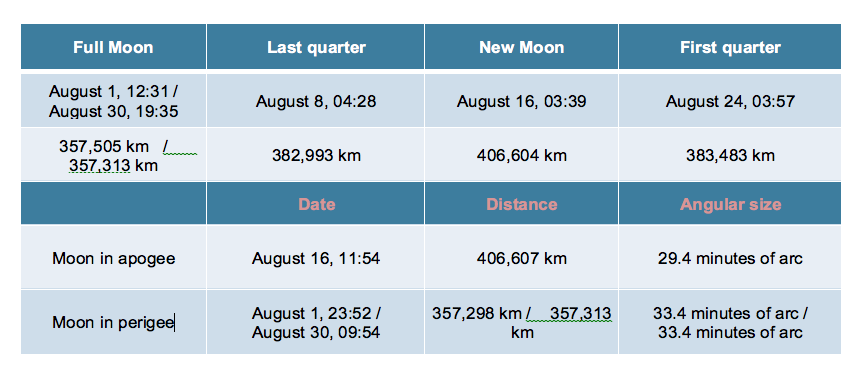
Watch the video of this month: https://youtu.be/5yxdI0qEC60
Contacts:
Dr. Agustín Márquez Limón (amarquez@inaoep.mx), Coordinación de Astrofísica-INAOE
M. C. Tania Martínez (astronomiaplanetariokayok@gmail.com), Red de Planetarios del Estado de Quintana Roo
Dr. Raúl Mújica García, (rmujica@inaoep.mx), Coordinación de Astrofísica-INAOE y Noche de las Estrellas
Luis Enrique Erro # 1, Tonantzintla, Puebla, México, Código Postal 72840, Tel: (222) 266.31.00, difusion@inaoep.mx
This work is licensed under a Creative Commons Attribution-NonCommercial-NoDerivs 2.5 Mexico License.


